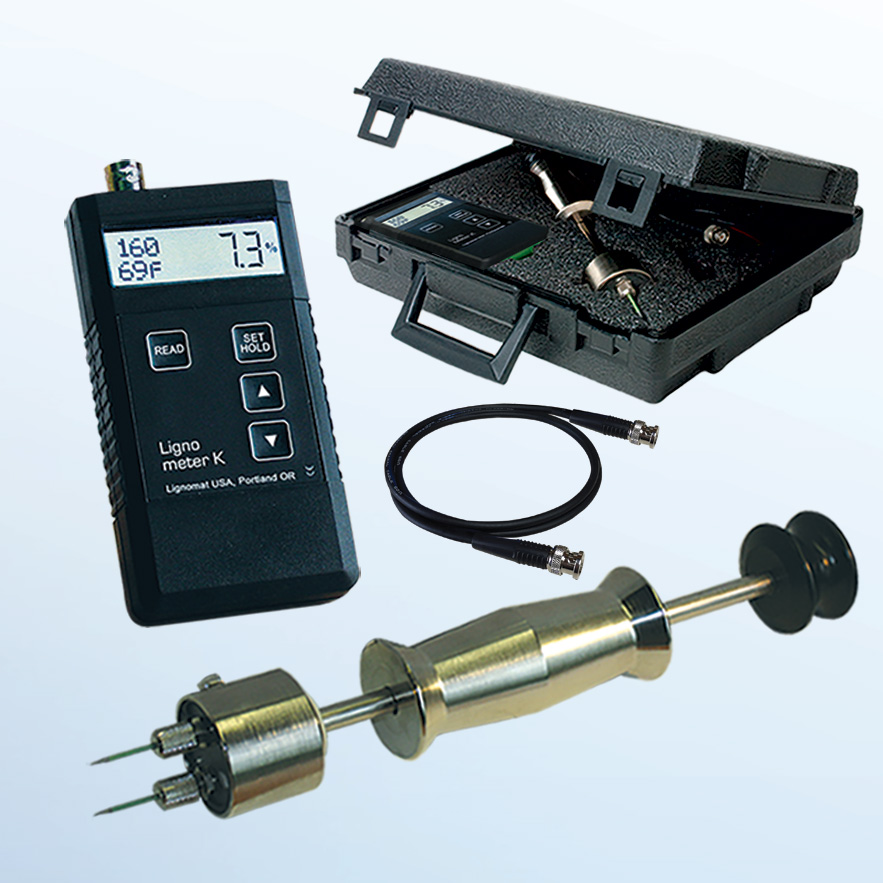Exactly How a Moisture Meter Can Improve Your Building And Construction Tasks and Prevent Damages
Exactly How a Moisture Meter Can Improve Your Building And Construction Tasks and Prevent Damages
Blog Article
Delve Into the World of Moisture Meters: Everything You Required to Know
In the world of dampness meters lies a globe of accuracy and functionality that typically goes undetected. Comprehending just how moisture meters run, the different kinds available, and their diverse uses can lose light on their value in making certain quality and effectiveness.
Exactly How Moisture Meters Work
Moisture meters operate by measuring the electric conductivity or capacitance of products to figure out the moisture content existing. These meters are vital devices across different markets, consisting of farming, building and construction, and woodworking. By using different techniques such as pinless or pin-type innovation, dampness meters give precise readings that assist specialists make informed choices.
Pin-type moisture meters work by inserting the sharp pins into the product being examined. On the other hand, pinless moisture meters utilize electromagnetic signals to check a larger area without triggering any type of damage to the material's surface area.
Despite the method used, wetness meters play a crucial duty in avoiding concerns such as mold and mildew development, structural damages, or product issues caused by excess moisture. Comprehending how these meters work is necessary for ensuring the top quality and stability of products in various applications.
Kinds Of Moisture Meters
Provided the important function dampness meters play in different industries, it is important to comprehend the different types offered to specialists for accurately assessing dampness degrees - Moisture Meter. There are primarily 2 primary sorts of wetness meters: pin-type and pinless dampness meters

On the various other hand, pinless wetness meters utilize electromagnetic sensor plates to check a larger location of the product without triggering any kind of damages. This kind appropriates for promptly scanning big locations and is typically utilized for floor covering, walls, and ceilings. Pinless meters are practical for taking readings on finished surfaces without leaving any kind of visible marks.
Both sorts of moisture meters have their advantages and are picked based on the specific requirements of the task available. Comprehending the distinctions between these types is vital for experts to make precise moisture assessments.
Applications Throughout Industries
Construction specialists depend on dampness meters to analyze the dampness degrees in structure materials like timber, concrete, and drywall, which is vital for preserving structural integrity and protecting against issues like rot or Full Report mold and mildew. The flooring market uses moisture meters to gauge the moisture content in subfloors before installing numerous flooring coverings, protecting against pricey damages due to excess moisture. In the food sector, dampness meters are made use of to keep an eye on and manage moisture levels in items such as grains, nuts, and dried out fruits to preserve quality and high quality.
Tips for Using Wetness Meters
Make use of the dampness meter's calibration setups to ensure precise readings when gauging the moisture web content in different products. Additionally, make certain the meter is established to the appropriate dampness array for the product you are measuring to get the most specific results.
When utilizing a pin-type moisture meter, place the pins to the appropriate depth advised for the product being evaluated. This guarantees that the wetness readings are taken from the appropriate depth within the product, supplying a more exact depiction of its wetness material. For pinless moisture meters, bear in mind to preserve appropriate contact with the product's surface to obtain reliable analyses.
Regularly check and change the batteries in your dampness meter to stop imprecise readings as a result of reduced power. When not in use to prolong its life-span and preserve its accuracy, Store the meter in a risk-free and completely dry location. By complying with these tips, you can make the most of the efficiency of your dampness meter and obtain exact moisture web content measurements throughout different products.
Upkeep and Calibration
To make sure the accuracy of moisture web content dimensions, routine maintenance and calibration of the wetness meter are important actions in its proper performance. Calibration changes the dampness meter to guarantee that it offers trusted and constant results.
Calibration ought to be done regularly, specifically if the see this page dampness meter is utilized frequently or in crucial applications where precise measurements are required. Many dampness meters include calibration tools or can be calibrated by expert solutions. Moisture Meter. It is advised to maintain a log of calibration days and results to track the performance of the dampness meter in time. By calibrating the moisture and preserving meter routinely, customers can trust the precision of the This Site dampness web content dimensions obtained.
Final Thought

Finally, moisture meters play a vital role in different markets by properly determining the dampness material of products. Comprehending just how these devices work, the various types readily available, and appropriate upkeep and calibration are vital for getting reputable results. Whether in farming, building and construction, or manufacturing, making use of moisture meters helps ensure quality assurance and efficiency in procedures.

In final thought, moisture meters play a crucial duty in different industries by properly determining the moisture web content of products.
Report this page